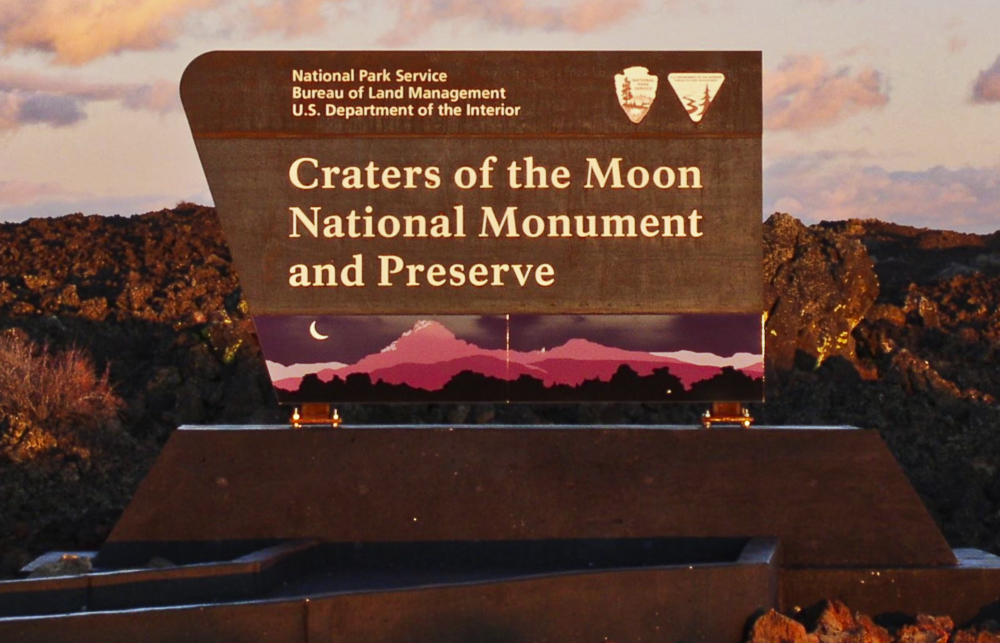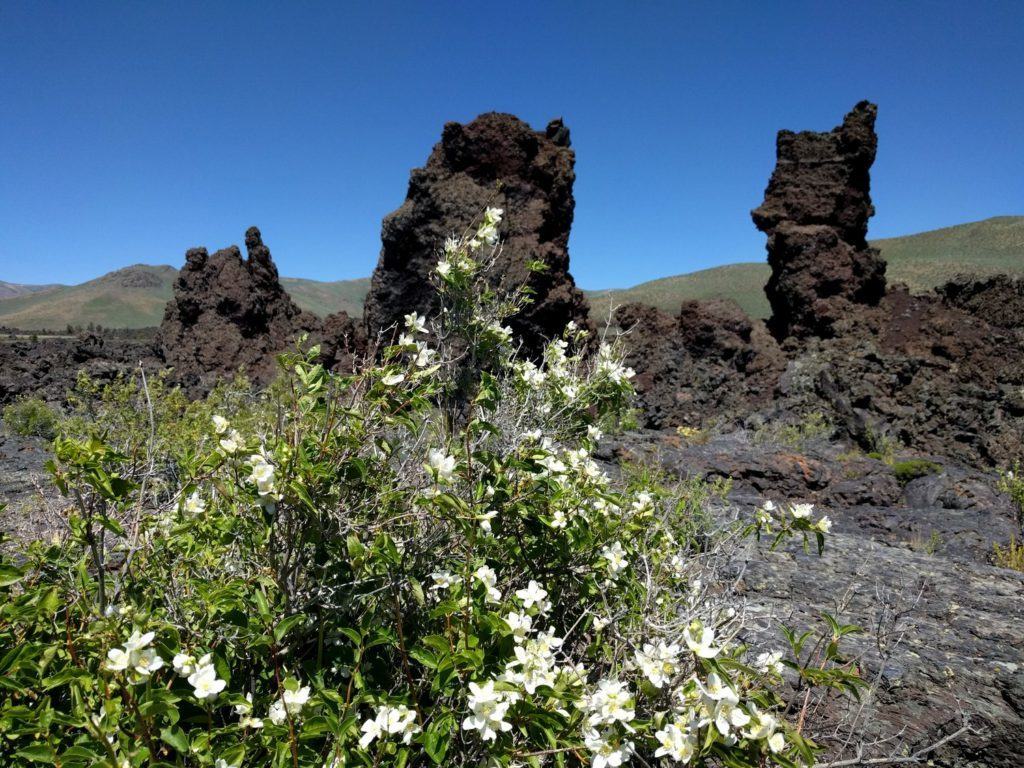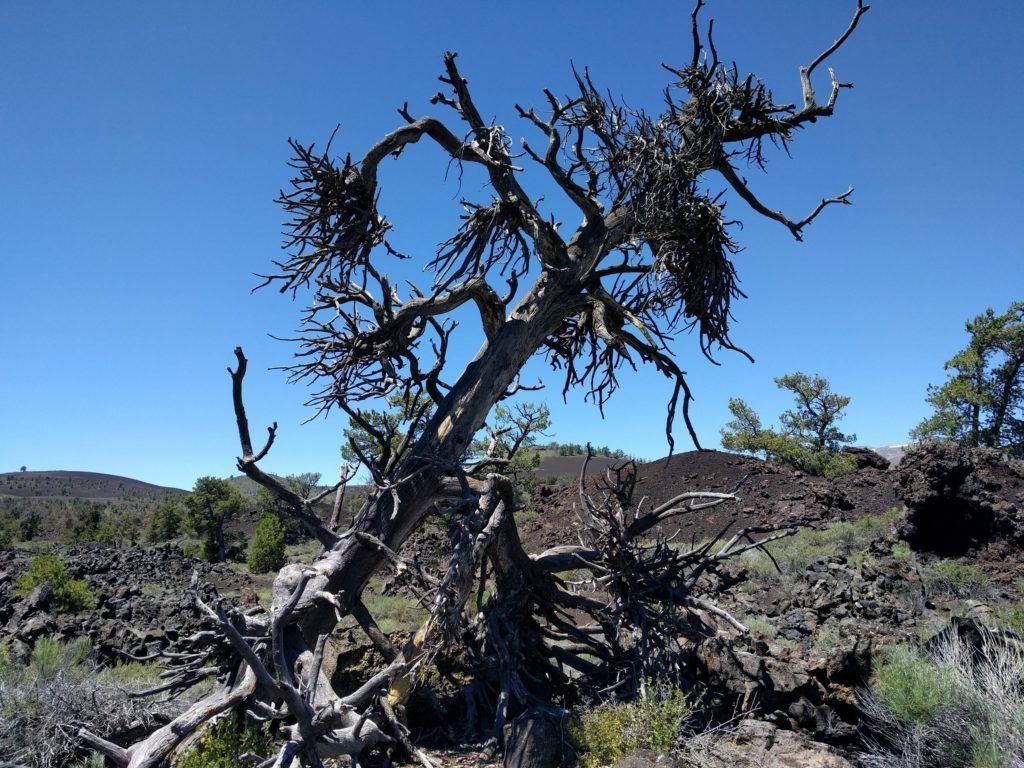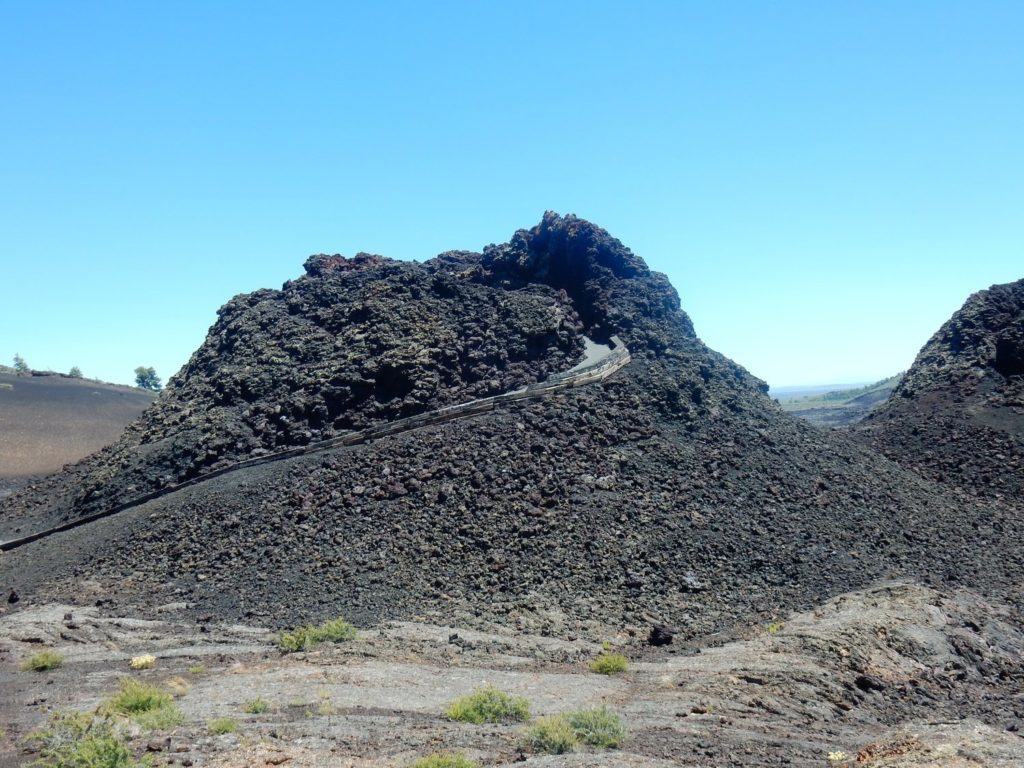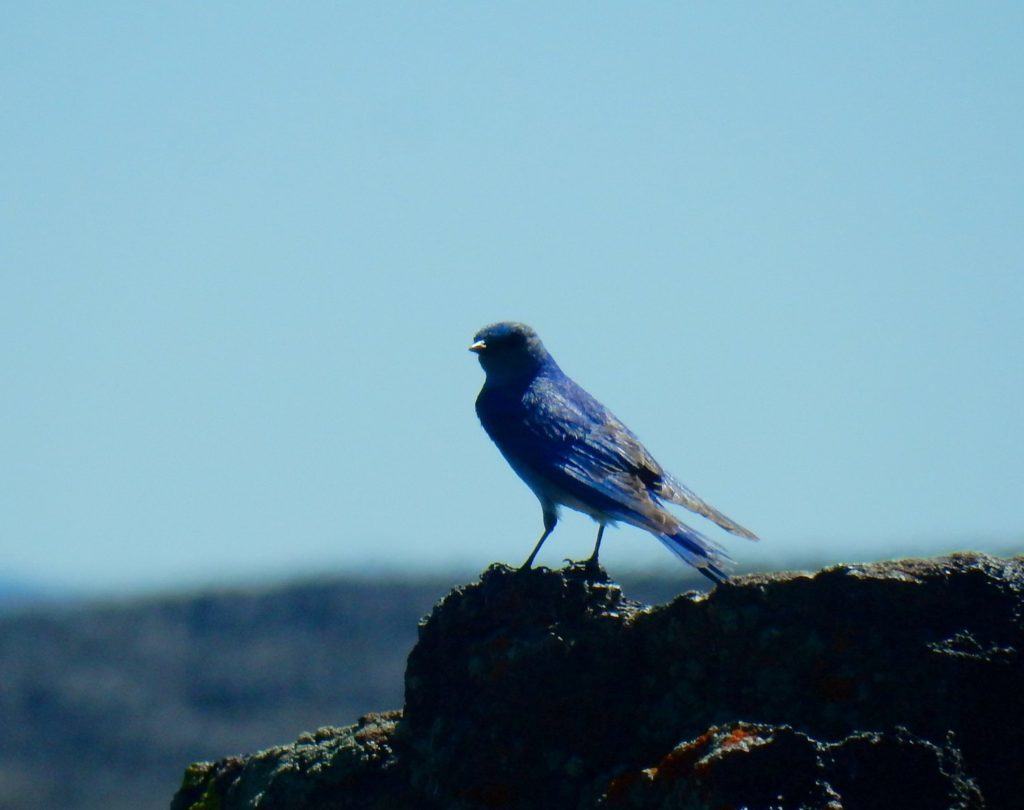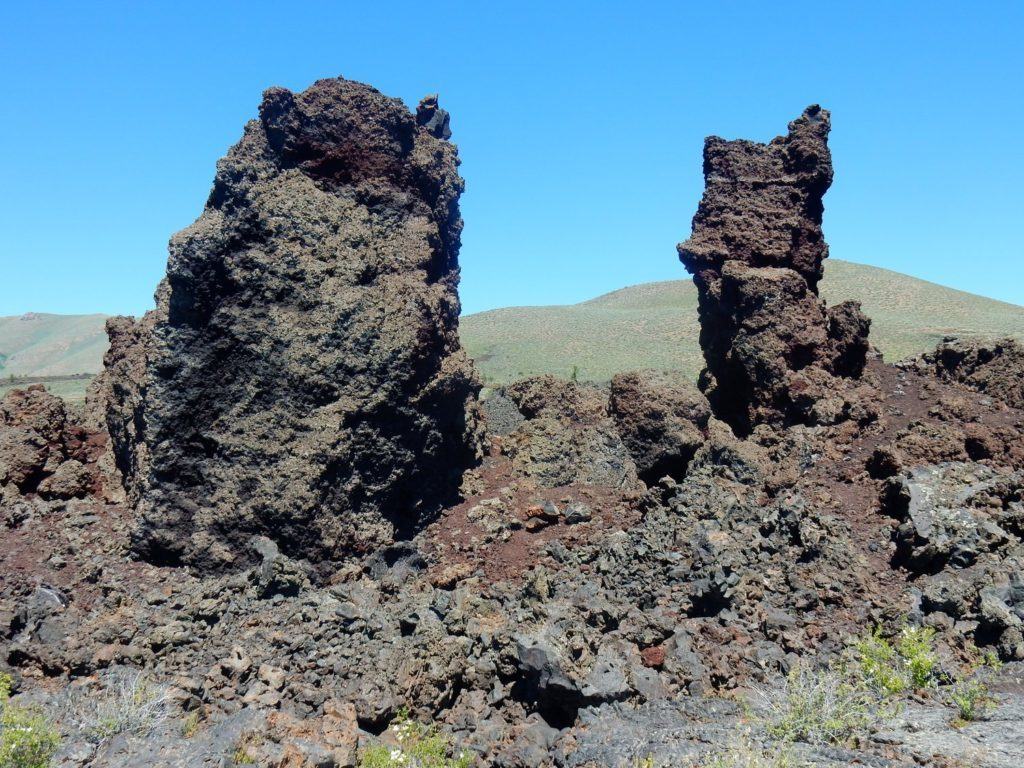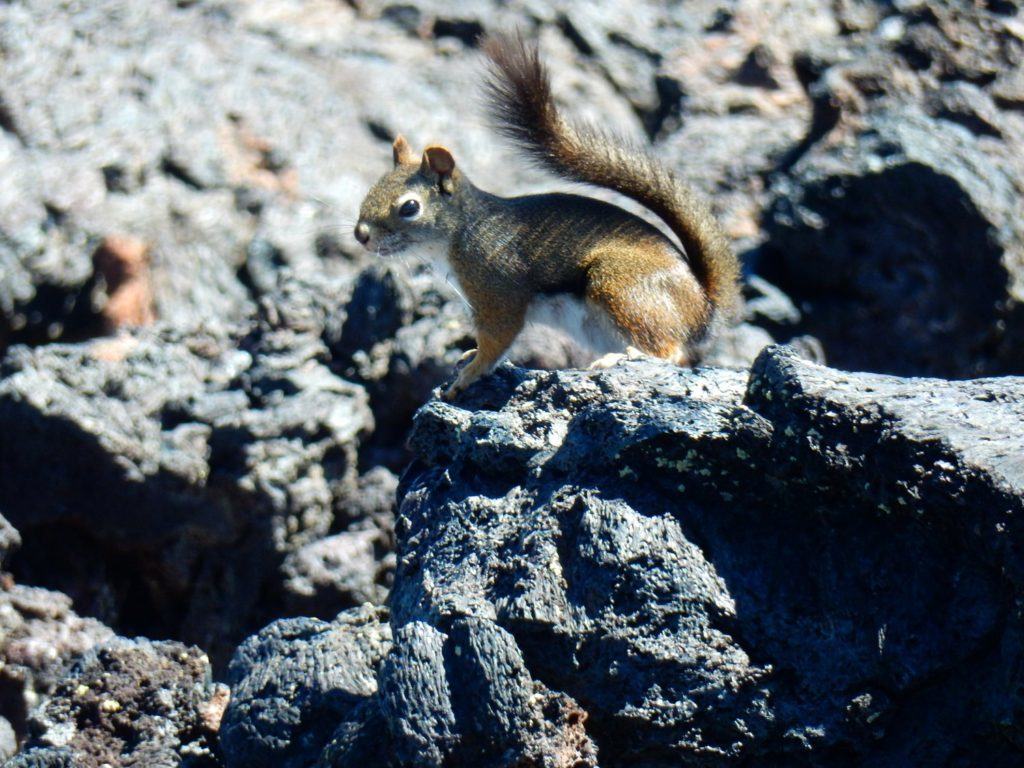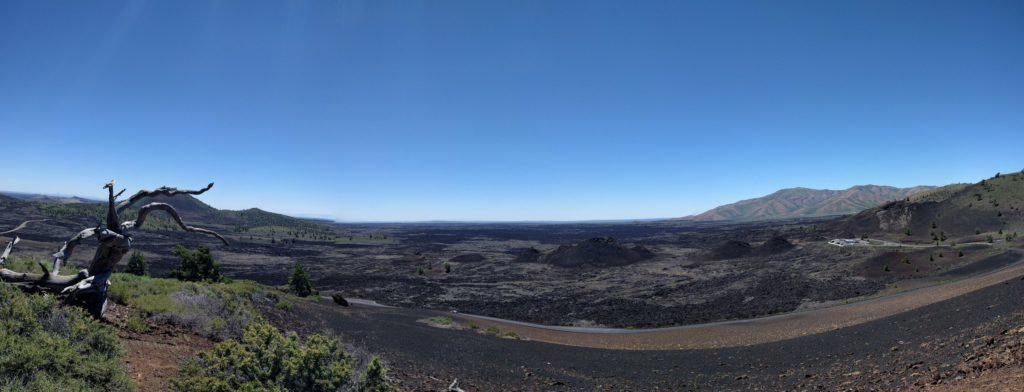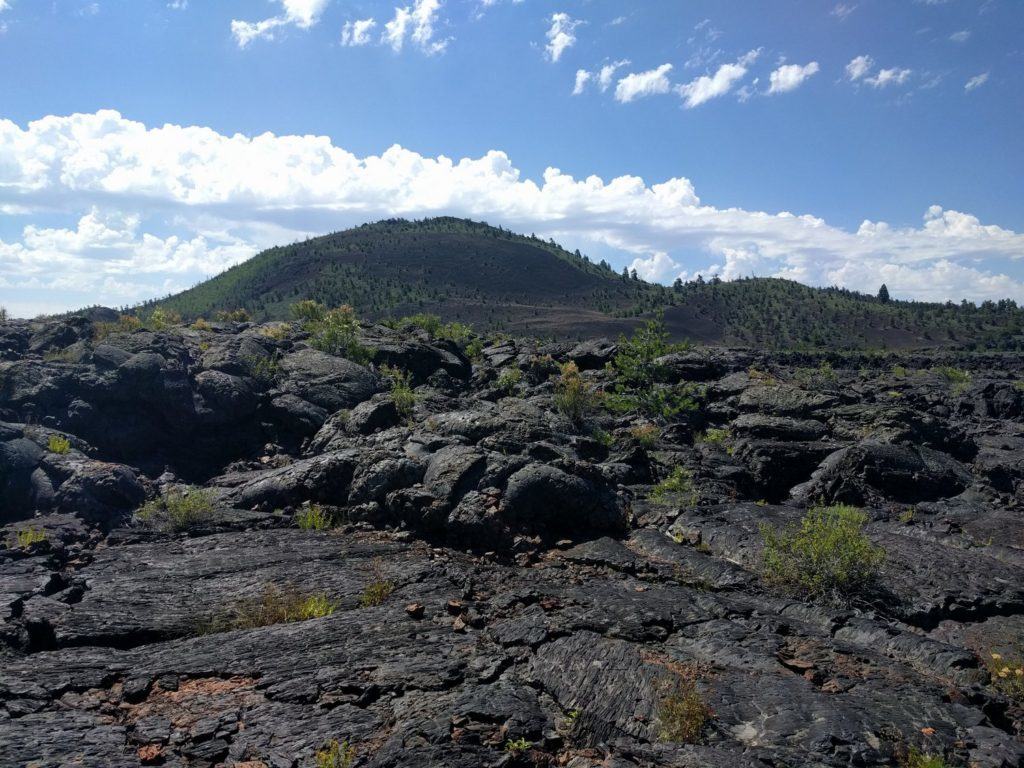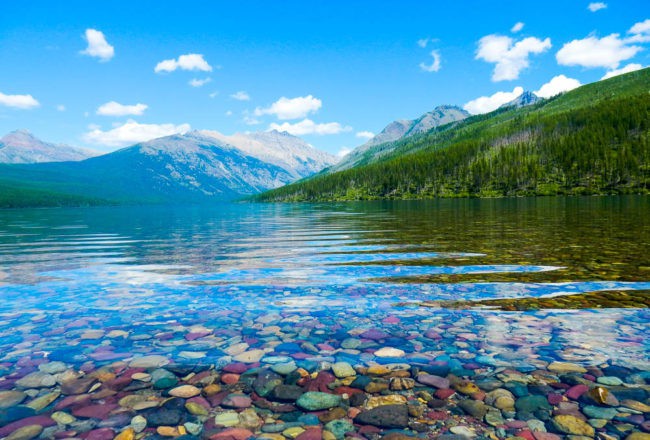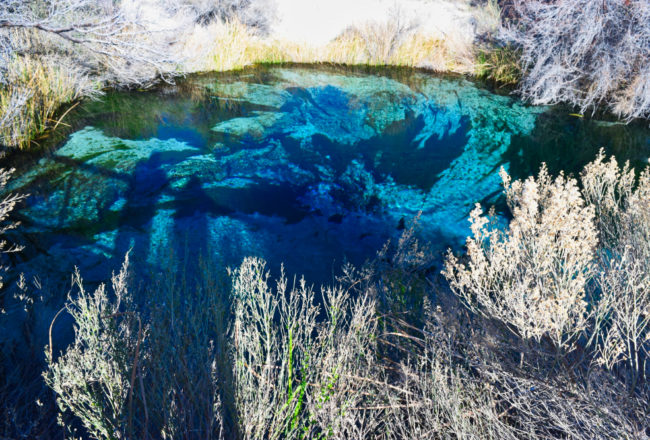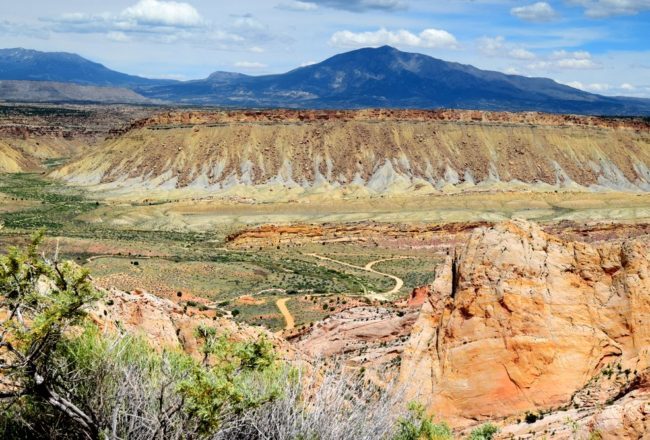Long ago, a huge serpent miles in length, lay where the channel of the Snake River is now. Though the serpent was never known to harm anyone, people were terrified by it. One spring, after it had lain asleep all winter, it left its bed and went to a large mountain. There it coiled its immense body around the mountain and sunned itself. After several days, thunder and lightning passed over the mountain and aroused the wrath of the serpent. More flashes of lightning played on the mountain, and this time, the lightning struck nearby. Angered, the serpent began to tighten its coils around the mountain. Soon the pressure caused the rocks to begin to crumble. Still, the serpent tightened its coils. The pressure became so great that the stones began to melt. The fire came from the cracks. Soon liquid rock flowed down the sides of the mountain. The huge serpent, slow in its movements, could not get away from the fire. So it was killed by the heat, and its body was roasted in the hot rock. At last, the fire burned itself out;the rocks cooled off;the liquid rock became solid again. Today if one visits the spot, he will see ashes and charred bones where the mountain used to be. If he will look closely at the solidified rock, he will see the ribs and bones of the huge serpent, charred and lifeless.
This is the Shoshone creation story for Craters of the Moon National Monument and Preserve. A wonderful myth story for America’s largest contiguous basaltic lava field which contains over 25 volcanic cones and 60 distinct solidified lava flows. The lava fields age from 15,000 to just 2,000 years old.
The park’s current name is in thanks to Robert Lambert, a part-time taxidermist, tanner and furrier from Boise, Idaho, who decided to explore the area in the 1920s after hearing reports of “strange things” from other fur trappers. On his third expedition, he and a friend, W.L Cole, explore south to north, covering 80 miles in 17 days. Among his gear, he also took a heavy box camera and tripod to photograph the area and its hidden wonders. They also brought an Airedale Terrier, a decision they were to regret. After three days of travel over the rough lava, the dog’s feet were raw and bleeding. For the remainder of the trip, Limbert and Cole had to carry the dog.
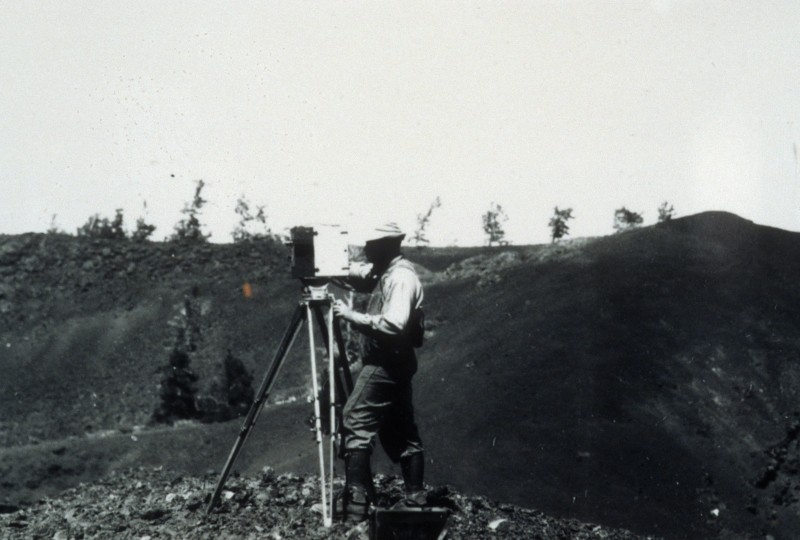
“Here are strange ice caves with stalactites and ice-encrusted walls, caves that contain as much ice in the middle of August as they do in the winter.” -Robert Limbert
Although Limbert wrote a number of photo essays, his most famous article was in 1924, entitled “Among the Craters of the Moon” in the National Geographic. Due to Libert’s work, Craters of the Moon National Monument was proclaimed by President Calvin Coolidge on May 1924. Later in 2000, President Bill Clinton greatly expanded the national monument to is current borders.
Hiking Craters of the Moon
When Hitch and I visited, we took few easy hikes, along a scenic drive loop, all of which can be completed in a day:
North Crater Flow: This 0.3-mile loop trail took us out onto North Crater Flow. This area is a pahoehoe (pah-hoy-hoy) flow that spilled from the North Crater vent about 2,200 years ago. Pahoehoe is basaltic lava which is smooth undulating, forming ropy masses. We also saw examples of pressure ridges, squeeze-ups, aa (ah-ah) lava, and rafted blocks.
Devil’s Orchard: A 0.5-mile paved trail where we explored cinder beds scattered with pieces of the North Crater wall. So called for its Island-like lava fragments stand in a sea of cinders. Here I learned that back in the 1960s park rangers actually cut down their old growth Limber Pine trees. In the end, management and control efforts were unsuccessful and resulted in the removal of 6000 limber pine trees. Today, dwarf mistletoe is recognized as a natural parasitic organism that has been a part of the Craters of the Moon limber pine ecology for hundreds to thousands of years. Makes you wonder, which is worse, the disease or the cure.
Inferno Cone: A steep 0.4-mile in-and-out trail that is worth the effort. The trail consists of cinders, a type of rock that crunches and crackles under each step. At the top, we were rewarded with a panoramic view of the Great Rift, Snake River Plain, and the Pioneer Mountains. The day was clear and I caught a faint outline of the Teton Range, 100 miles to the east. There was also a tall pine tree and we sat in its shade and listen to the wind whoosh through its branches.
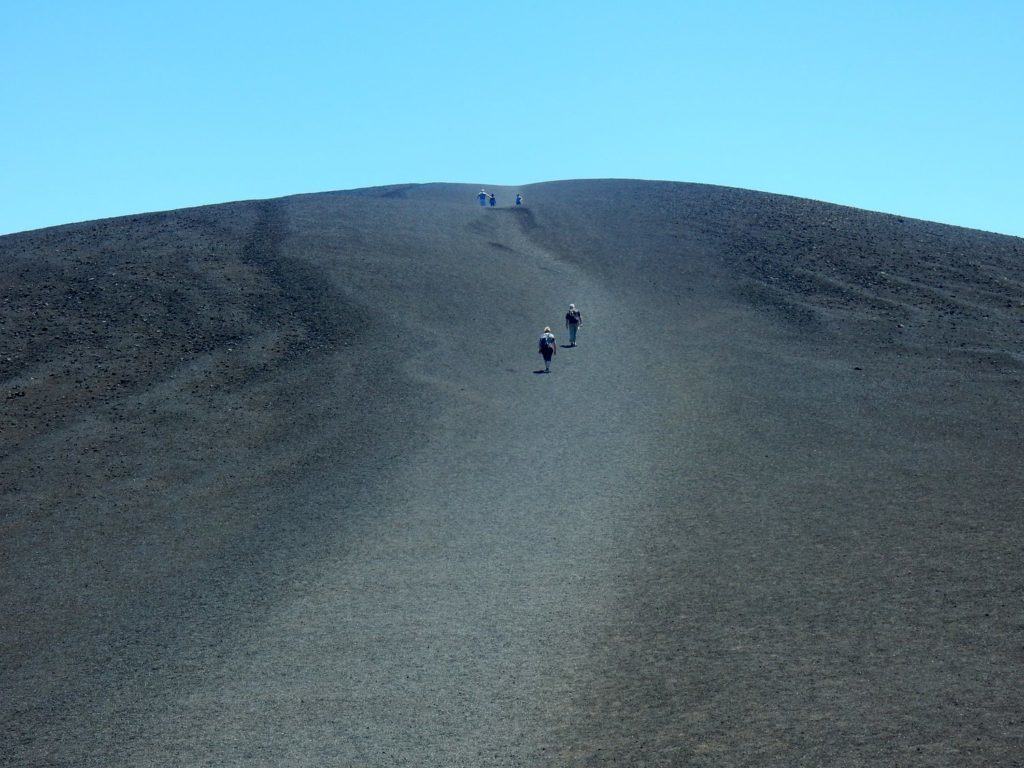
Inferno Cone is a cinder cone, a steep conical hill of loose pyroclastic fragments, such as either volcanic clinkers, cinders, volcanic ash, or scoria that has been built around a volcanic vent
Splatter Cones: This is a short 0.2-mile walk to a chain of spatter cones Spatter cones formed as hot lumps of lava are ejected a short distance into the air and to fall to the ground around a small central vent. The molten blobs landed on top of each other, cooled, and adhered to nearby pieces, forming the walls of what looks like a mini-volcano. The trail lets you view into two splatter cones. One splatter cone is rather tall and deep, while the other is somewhat shallow. The shallower one called Snow Cone still has last winter’s snow inside its vent.
